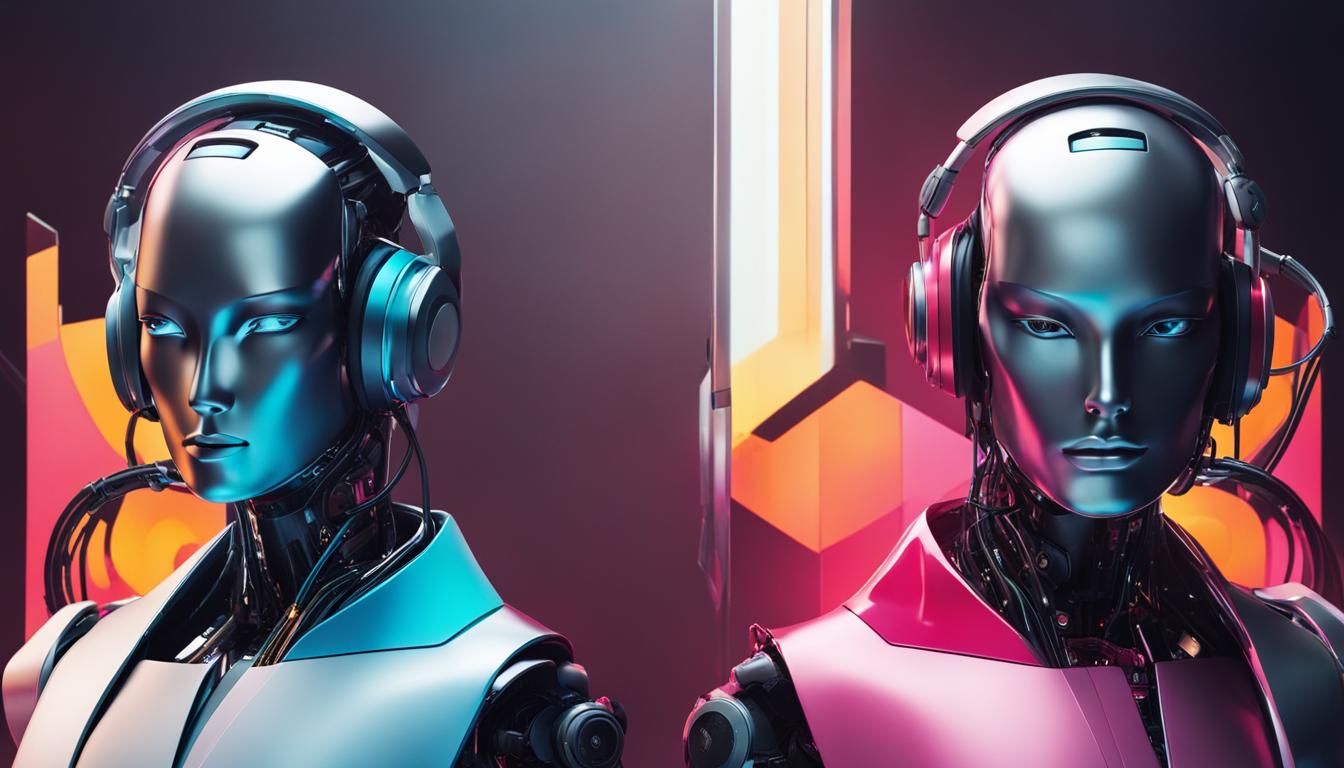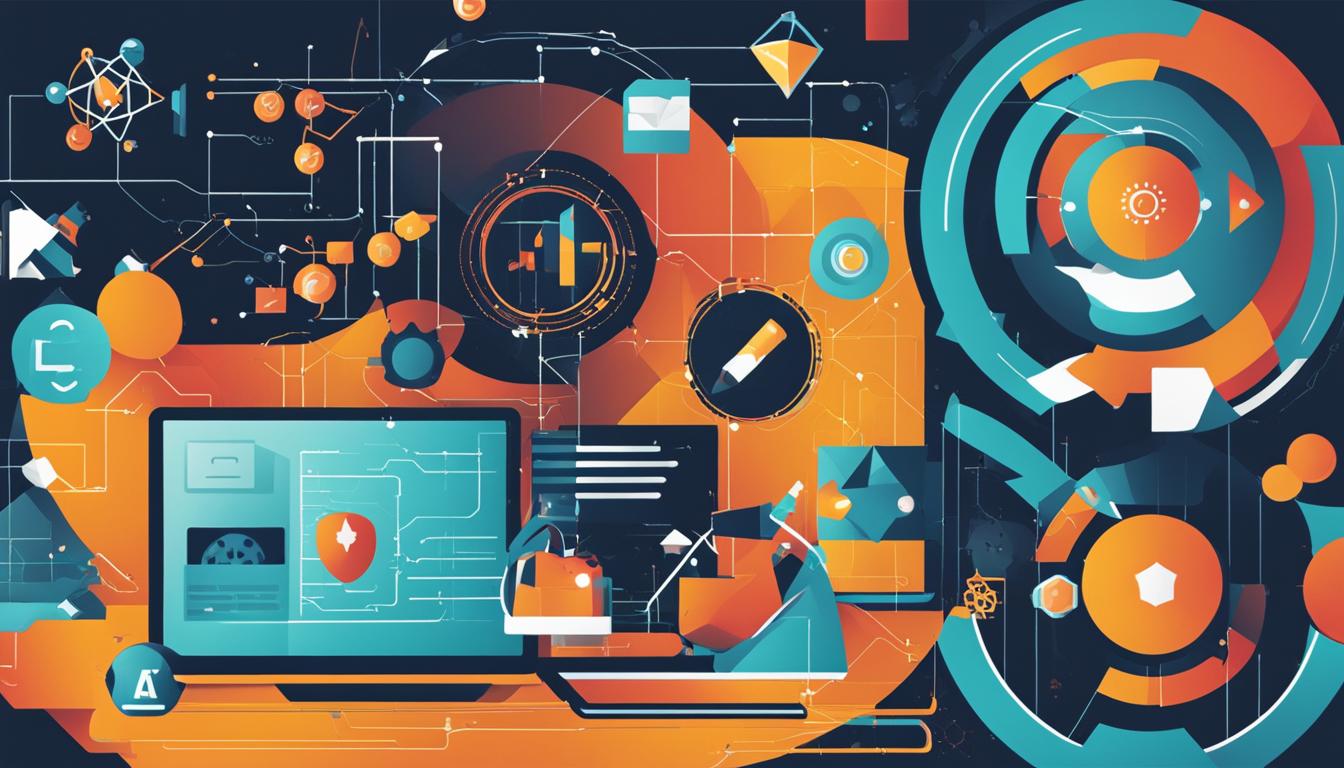Artificial intelligence (AI) and augmented intelligence (IA) are often used interchangeably but have distinct differences. AI refers to the intelligence displayed by machines, while IA focuses on enhancing human intelligence. AI aims to replace human cognitive functions, while IA supplements human intelligence with AI. Understanding the difference between AI and IA is crucial in grasping their impact on technology and digital transformation.
Key Takeaways:
- AI involves the intelligence exhibited by machines, while IA focuses on enhancing human intelligence.
- AI aims to replace human cognitive functions, while IA supplements human intelligence with AI.
- Understanding the difference between AI and IA is important for technology and digital transformation.
What is Artificial Intelligence?
Artificial Intelligence (AI) refers to the intelligence exhibited by machines, allowing them to perform tasks traditionally carried out by humans. AI encompasses various aspects such as logic, problem-solving, planning, natural language processing, and face recognition. It can learn from data and improve its performance over time. AI is often compared to human intelligence, but it is distinct in its approach and applications.
AI is not limited to a single technology or methodology. It includes machine learning, which enables AI systems to learn from data and make predictions or decisions without explicit programming. Machine learning allows AI systems to identify patterns, make inferences, and adapt their behavior based on the input they receive.
Unlike human intelligence, which is based on complex biological processes, AI relies on algorithms and computational power to process information and make decisions. AI systems can handle large amounts of data quickly and perform complex calculations with precision. While AI can excel in certain tasks, it still lacks the creativity, intuition, and emotional intelligence that humans possess.

The Distinction Between AI and Machine Learning
AI and machine learning are often used interchangeably, but they are not the same. AI refers to the broader field of creating intelligent systems, while machine learning is a subset of AI that focuses on algorithms and models that can learn from data. Machine learning is a key component of AI, enabling systems to improve their performance based on experience.
Machine learning algorithms can be categorized into two main types: supervised learning and unsupervised learning. In supervised learning, the algorithm is trained on labeled data, where the desired output is known. The algorithm learns to recognize patterns and make predictions based on examples. In unsupervised learning, the algorithm is given unlabeled data and learns to identify patterns or group similar data points without any predefined labels.
The combination of AI and machine learning has led to significant advancements in areas such as image recognition, natural language processing, and autonomous vehicles. AI-powered systems are now able to understand spoken language, translate between languages, and even generate realistic images and videos.
AI vs Human Intelligence
While AI can perform specific tasks more efficiently than humans, it still falls short in replicating human intelligence. Human intelligence is multifaceted, involving not only logical reasoning and problem-solving but also emotional intelligence, creativity, and social skills.
One of the key differences between AI and human intelligence lies in their ability to understand context and make judgments based on moral or ethical considerations. While AI can make decisions based on predefined rules or patterns, it lacks the ability to comprehend complex situations or make subjective judgments that require empathy or cultural understanding.
Another distinction is that human intelligence is grounded in embodied experience. Humans can understand the world through their senses, engage in physical interactions, and perceive the nuances of the environment. AI, on the other hand, relies solely on data and lacks the embodied experience that humans possess.
In summary, AI is a powerful tool that can mimic certain aspects of human intelligence and perform specific tasks with efficiency. However, it is still a far cry from replicating the breadth and depth of human intelligence.
Stay tuned for the next section, where we will explore the concept of Augmented Intelligence and its applications.
What is Augmented Intelligence?
Augmented Intelligence (IA), also known as intelligence amplification, is a concept that aims to enhance human intelligence through collaboration with artificial intelligence (AI) technologies. Unlike AI, which focuses on replacing human cognitive functions, IA works hand in hand with humans to improve decision-making, productivity, and overall performance.
IA leverages machine learning algorithms and predictive analytics to analyze vast amounts of data and present actionable insights to humans. By combining the strengths of AI and human intelligence, IA empowers individuals to make informed decisions and achieve better outcomes in various industries.
Benefits of Augmented Intelligence
There are several benefits to embracing augmented intelligence in organizations:
- Enhanced Decision-Making: IA provides humans with access to advanced analytics and data-driven insights, allowing for more informed and strategic decision-making.
- Increased Productivity: By automating repetitive tasks and providing real-time recommendations, IA frees up human resources to focus on high-value activities, ultimately boosting productivity.
- Improved Efficiency: IA streamlines processes, reduces errors, and identifies optimization opportunities, leading to greater operational efficiency across different domains.
- Personalized Experiences: With IA, businesses can deliver personalized experiences to customers, tailoring products, services, and interactions based on individual preferences and needs.
Augmented Intelligence Applications and Examples
The applications of augmented intelligence span across various industries, revolutionizing the way organizations operate. Here are a few examples of IA in action:
| Industry | Application |
|---|---|
| Healthcare | IA can assist in diagnosing diseases, analyzing medical records, and improving patient care through personalized treatment plans. |
| Finance | IA enables personalized financial planning, fraud detection, and risk assessment, ensuring efficient and secure financial services. |
| Manufacturing | IA optimizes production processes, enables predictive maintenance, and enhances quality control, leading to improved efficiency and reduced costs. |
| Retail | IA powers personalized recommendations, inventory management, and demand forecasting, delivering tailored experiences to customers and driving sales. |
These examples showcase the diverse ways in which IA can be applied, providing significant value in terms of efficiency, accuracy, and customer satisfaction.
By harnessing the power of augmented intelligence, organizations can unlock new opportunities, accelerate digital transformation, and stay ahead in a rapidly evolving technological landscape.

Artificial Intelligence vs Augmented Intelligence
Artificial Intelligence (AI) and Augmented Intelligence (IA) may seem similar, but they have distinct differences in their approach and applications. AI aims to replace human cognitive functions and operate independently, while IA focuses on enhancing human intelligence by collaborating with AI technologies. By understanding the difference between AI and IA, we can better grasp their impact on technology and digital transformation.
AI is designed to perform tasks traditionally carried out by humans. It encompasses various aspects such as logic, problem-solving, natural language processing, and face recognition. AI can learn from data and improve its performance over time. On the other hand, IA works in partnership with humans to supplement their intelligence. It leverages machine learning and predictive analytics to improve decision-making and productivity.
While AI operates without human intervention, IA provides humans with actionable data and insights to make informed decisions. It combines the strengths of both human and artificial intelligence. AI is best suited for tasks that require automation and data processing, while IA excels in areas where human judgment and decision-making are critical. Understanding and utilizing both AI and IA can lead to new opportunities and increased efficiency in various domains.
Table: Comparing AI and IA
| AI | IA |
|---|---|
| Replaces human cognitive functions | Enhances human intelligence |
| Operates independently | Works in collaboration with humans |
| Performs tasks without human intervention | Provides humans with actionable data and insights |
| Focuses on automation and data processing | Emphasizes human judgment and decision-making |
| Application in various fields such as healthcare, finance, manufacturing, and more | Used for tasks that require human expertise and critical thinking |
Understanding AI and IA is crucial for organizations looking to harness the power of technology for digital transformation. AI offers automation and data-driven insights, while IA provides support for decision-making and productivity. By leveraging the strengths of both AI and IA, organizations can unlock new opportunities and achieve greater efficiency in their operations.
Applications of Augmented Intelligence
Augmented Intelligence (IA) has a wide range of applications across various industries, transforming the way businesses operate and make decisions. By combining human intelligence with AI technologies, IA enables organizations to optimize processes, enhance productivity, and drive innovation. Let’s explore some examples of how IA is being applied in different sectors:
Healthcare
In the healthcare industry, IA is revolutionizing patient care and improving outcomes. With the help of machine learning algorithms, IA can analyze vast amounts of patient data to identify patterns and make accurate diagnoses. IA-powered tools can also assist healthcare professionals in treatment planning, predicting patient outcomes, and personalized medicine. Furthermore, IA enables the automation of administrative tasks such as billing and claims processing, allowing healthcare providers to focus more on delivering quality care.
Finance
In the financial sector, IA is being utilized to enhance customer experience and optimize financial planning. By leveraging AI algorithms, IA can analyze customer data to provide personalized financial advice and investment recommendations. IA-powered chatbots are also being employed in customer service, addressing queries and resolving issues promptly. Additionally, IA assists in risk management by predicting market trends, detecting fraud, and preventing manual errors in financial operations.
Manufacturing
Augmented Intelligence is transforming the manufacturing industry by streamlining processes and improving efficiency. IA applications in manufacturing include smart production planning, predictive maintenance, and quality control. By leveraging AI technologies, IA helps optimize production schedules, predict machine failures, and monitor product quality in real-time. This enables manufacturers to minimize downtime, reduce costs, and ensure the highest standards of product quality.
| Industry | Augmented Intelligence Applications |
|---|---|
| Healthcare | Diagnosis and treatment planning Personalized medicine Administrative automation |
| Finance | Personalized financial planning Chatbot customer service Risk management |
| Manufacturing | Smart production planning Predictive maintenance Quality control |
These examples highlight just a few of the many applications of Augmented Intelligence in various industries. IA continues to revolutionize sectors such as oil and gas, retail, telecommunications, and more. As organizations embrace IA, they unlock new opportunities for growth, efficiency, and innovation.
Conclusion
Understanding the Difference Between AI and Augmented Intelligence (IA) is essential in grasping their impact on technology and digital transformation. While AI aims to replace human intelligence, IA focuses on enhancing it through collaboration with AI technologies.
AI and IA have distinct applications and benefits. AI offers automation and the ability to perform tasks without human intervention, while IA provides support for decision-making and productivity. By leveraging the strengths of both AI and IA, organizations can unlock new opportunities and achieve greater efficiency in various domains.
In summary, AI is the intelligence displayed by machines, while IA focuses on enhancing human intelligence. AI operates independently, while IA works in partnership with humans, providing them with actionable data and insights. Both AI and IA have their unique applications and offer valuable contributions to technological advancements.
FAQ
What is the difference between Artificial Intelligence (AI) and Augmented Intelligence (IA)?
AI refers to the intelligence displayed by machines, while IA focuses on enhancing human intelligence.
How does AI aim to replace human cognitive functions?
AI can perform tasks traditionally carried out by humans, such as logic, problem-solving, planning, natural language processing, and face recognition.
How does IA enhance human intelligence?
IA works in collaboration with humans, using machine learning and predictive analytics to improve decision-making and productivity.
How does AI learn and improve over time?
AI can learn from data and continuously improve its performance through machine learning algorithms.
What are some examples of IA applications?
IA has applications in healthcare, finance, manufacturing, and oil and gas. Examples include customer analytics, sales forecasting, and data understanding.
How does AI operate compared to IA?
AI can perform tasks without human intervention, while IA works in partnership with humans, providing them with actionable data and insights.
What are the benefits of IA in healthcare?
IA can improve patient care, reduce medical errors, and streamline processes such as billing and claims.
How does IA benefit the financial sector?
IA helps with personalized financial planning, prevents manual errors, and improves efficiency.
What are some examples of IA applications in manufacturing?
IA speeds up the design process and improves efficiency in manufacturing industries.
Which other industries can benefit from IA?
Other industries like oil and gas, retail, and telecommunications can benefit from IA in areas such as predictive maintenance, market analysis, and customer service.
 Skip to main content
Skip to main content


